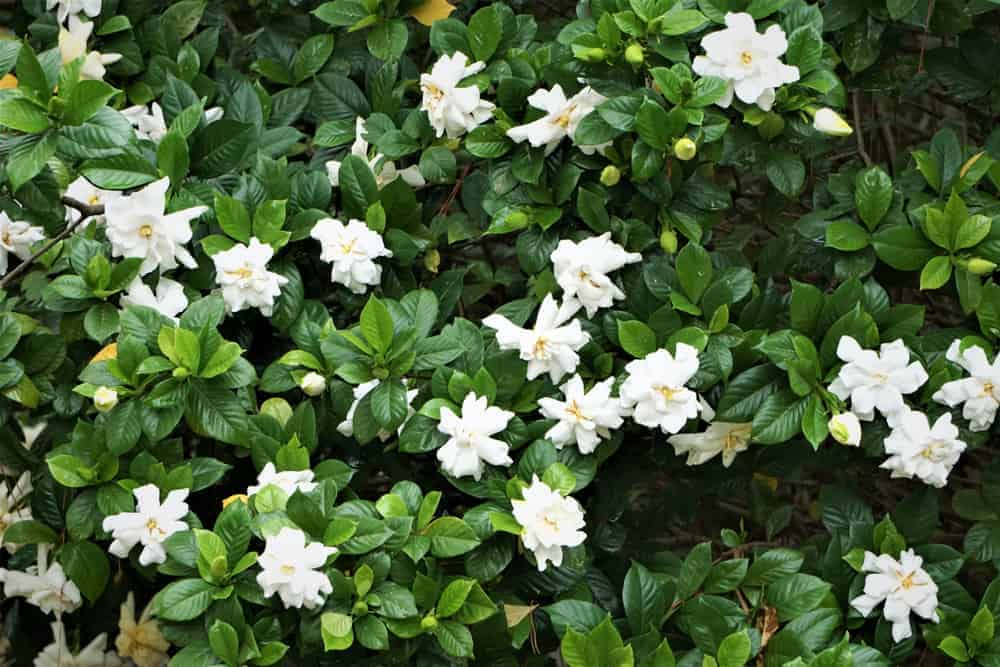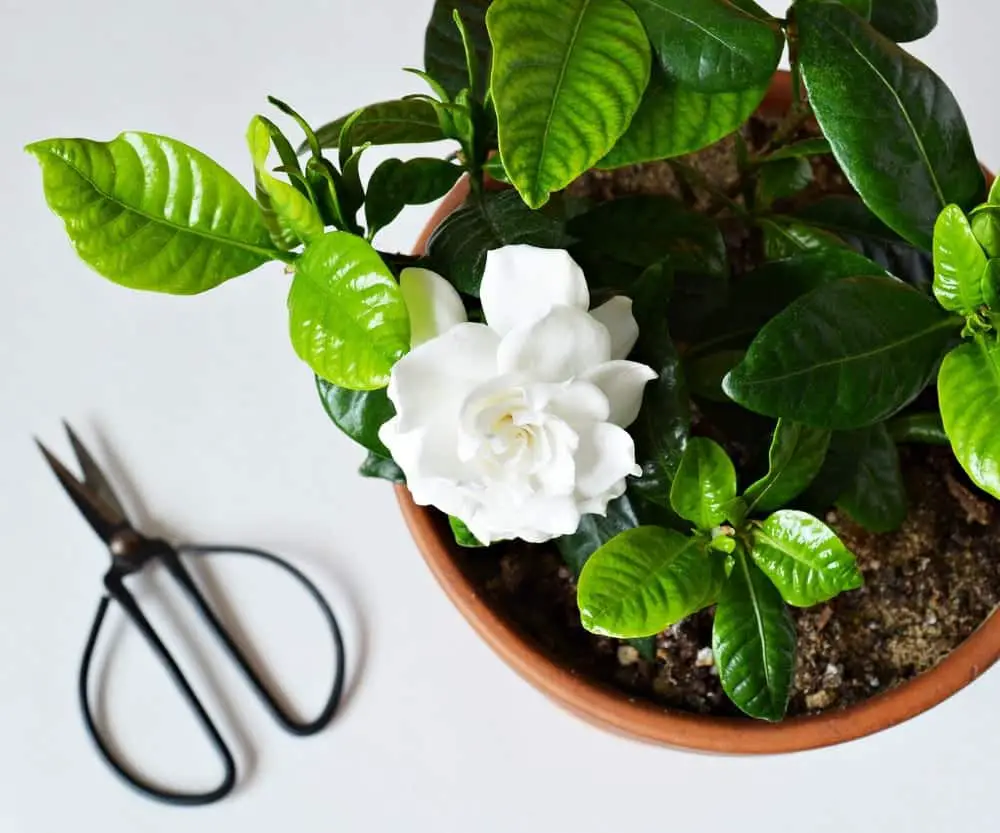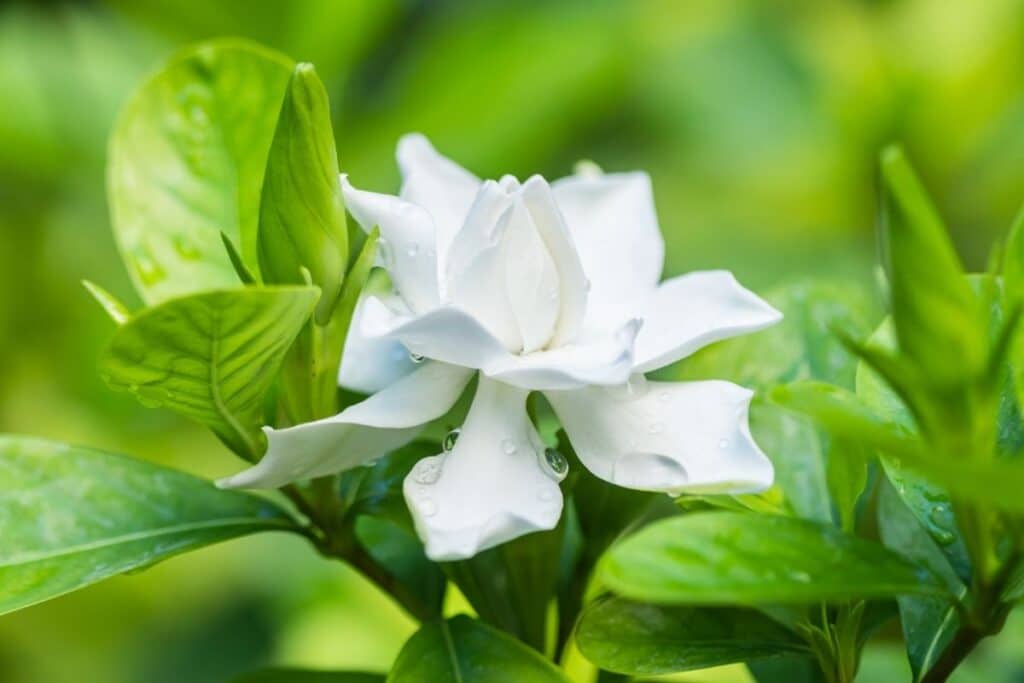Choosing the Right Spot for Your Gardenia
When it comes to planting a gardenia, selecting the right location is crucial for the plant’s growth and blooming. Gardenias are known for their beautiful, fragrant flowers and glossy, dark green leaves, but they can be finicky when it comes to their environment. To ensure your gardenia thrives, it’s essential to consider factors such as sunlight, soil quality, and drainage when deciding where to plant a gardenia.
Gardenias prefer bright, indirect sunlight, but direct sunlight can cause the leaves to become scorched and the flowers to fade. If you’re planting a gardenia in a sunny location, consider providing some shade, especially during the hottest part of the day. On the other hand, if your gardenia is not receiving enough sunlight, it may not produce as many flowers.
Soil quality is also vital for gardenias. These plants prefer well-draining, acidic soil that is rich in organic matter. If your soil is heavy clay or sandy, you may need to amend it with compost or other organic matter to create a more suitable environment for your gardenia. Additionally, gardenias prefer a slightly acidic soil pH, ranging from 5.0 to 6.0.
Drainage is another critical factor to consider when planting a gardenia. These plants don’t like wet feet, so make sure the soil drains well and doesn’t collect water. If you’re planting a gardenia in a low-lying area or where water tends to collect, consider raising the bed or improving the drainage.
By considering these factors, you can create an ideal environment for your gardenia to thrive. Remember, the right location is key to a healthy, blooming gardenia. Take the time to evaluate your yard or garden and choose a spot that meets your gardenia’s needs. With proper care and attention, your gardenia will reward you with beautiful flowers and a lush, green foliage.
How to Select the Perfect Gardenia Planting Site
To determine the best location for planting a gardenia, it’s essential to evaluate your yard or garden carefully. Start by assessing the sunlight patterns in your yard. Gardenias prefer bright, indirect sunlight, so look for areas that receive morning sun and dappled afternoon sun. Avoid planting in areas with full sun, especially in warmer climates, as this can cause the leaves to become scorched and the flowers to fade.
Next, test the soil pH in your yard. Gardenias prefer slightly acidic soil with a pH between 5.0 and 6.0. You can purchase a soil testing kit or send a sample to a lab for analysis. If your soil is too alkaline, you can amend it with elemental sulfur or peat moss to lower the pH.
Moisture levels are also crucial when selecting a gardenia planting site. Gardenias prefer well-draining soil and can be susceptible to root rot if the soil is too wet. Check the drainage in your yard by digging a small hole and filling it with water. If the water drains quickly, the soil is likely well-draining. If the water pools or drains slowly, you may need to amend the soil with organic matter or raise the bed.
When evaluating your yard, also consider the wind direction and speed. Gardenias can be sensitive to wind, which can cause the leaves to become damaged and the flowers to drop. If you live in a windy area, consider planting your gardenia in a sheltered location or providing a windbreak, such as a fence or a row of trees.
Finally, think about the accessibility of the location. Gardenias require regular watering, fertilizing, and pruning, so choose a location that is easy to reach and maintain. By carefully evaluating your yard and selecting the perfect gardenia planting site, you can create an ideal environment for your plant to thrive.
Remember, the right location is key to a healthy, blooming gardenia. By considering factors such as sunlight, soil quality, and drainage, you can determine the best location for planting a gardenia in your yard. With proper care and attention, your gardenia will reward you with beautiful flowers and a lush, green foliage.
Understanding Gardenia Planting Zones and Climate
Gardenias are sensitive to temperature and climate, and understanding the planting zones and climate requirements is crucial for successful growth. The United States Department of Agriculture (USDA) has divided the country into 11 planting zones, each representing a specific temperature range. Gardenias thrive in zones 8-11, where the temperature remains above 10°F (-12°C) during the winter months.
In addition to planting zones, gardenias also require a specific climate to thrive. They prefer a warm, humid climate with average temperatures ranging from 65°F (18°C) to 90°F (32°C). Gardenias can tolerate some frost but are sensitive to extreme temperatures, wind, and drought. In areas with harsh winters, gardenias can be grown in containers and brought indoors during the winter months.
To determine if your area is suitable for planting gardenias, check the USDA planting zone map and consult with local nurseries or gardening experts. They can provide valuable insights into the specific climate and temperature conditions in your area and recommend the best gardenia varieties for your region.
Gardenias can be grown in a variety of climates, but they require special care in areas with extreme temperatures or low humidity. In warm, humid climates, gardenias can be grown outdoors year-round, while in cooler, drier climates, they may need to be grown in containers or greenhouses. By understanding the planting zones and climate requirements, you can create an ideal environment for your gardenia to thrive.
When deciding where to plant a gardenia, consider the microclimate in your yard. Microclimates refer to the specific temperature and humidity conditions in a particular area, which can vary significantly from the surrounding climate. For example, a south-facing wall or a spot near a body of water can create a microclimate that is warmer and more humid than the surrounding area.
By understanding the planting zones, climate, and microclimate in your area, you can choose the perfect location for your gardenia and provide the ideal conditions for growth and blooming.
The Benefits of Planting Gardenias in Containers
Planting gardenias in containers can be a great way to enjoy these beautiful flowers, especially if you have limited space or poor soil quality. Container gardening offers several benefits, including flexibility, better soil quality, and improved drainage.
One of the main advantages of container gardening is flexibility. Containers can be moved to different locations to take advantage of changing sunlight patterns or to protect the plant from extreme temperatures. This is especially useful for gardenias, which prefer bright, indirect sunlight but can be sensitive to direct sunlight.
Another benefit of container gardening is better soil quality. Gardenias prefer well-draining, acidic soil that is rich in organic matter. Containers allow you to create a customized soil mix that meets the specific needs of your gardenia, which can be especially useful if your native soil is poor quality.
Improved drainage is also a significant advantage of container gardening. Gardenias don’t like wet feet, so it’s essential to ensure that the soil drains well to prevent root rot. Containers with good drainage holes can help to prevent waterlogged soil and root rot, which can be a significant problem for gardenias.
To choose the right container for your gardenia, consider the size of the plant and the amount of soil it will require. A container that is at least 6-8 inches deep and 12-18 inches wide is a good starting point. Make sure the container has good drainage holes to prevent waterlogged soil.
When selecting a soil mix for your gardenia, look for a mix that is specifically designed for acid-loving plants like gardenias. A mix that contains peat moss, perlite, and vermiculite can provide good drainage and aeration for the roots.
By planting your gardenia in a container, you can create a gardenia-friendly environment that meets the specific needs of your plant. With proper care and attention, your gardenia will thrive in its container and provide beautiful blooms and foliage for years to come.
Common Mistakes to Avoid When Planting Gardenias
When planting gardenias, it’s essential to avoid common mistakes that can impact the plant’s growth and blooming. One of the most common mistakes is planting gardenias in low-light areas. Gardenias require bright, indirect sunlight to thrive, so planting them in a shaded area can lead to weak and spindly growth.
Another mistake is using poor soil quality. Gardenias prefer well-draining, acidic soil that is rich in organic matter. If the soil is too alkaline or lacks essential nutrients, the plant may not thrive. It’s essential to test the soil pH and amend it if necessary before planting a gardenia.
Overwatering is also a common mistake when planting gardenias. Gardenias don’t like wet feet, so it’s essential to ensure that the soil drains well and doesn’t collect water. Check the soil moisture regularly, and avoid watering the plant if the soil is already moist.
Planting gardenias in areas with poor air circulation can also lead to problems. Gardenias are susceptible to fungal diseases, which thrive in humid environments. Planting them in areas with good air circulation can help prevent these diseases and promote healthy growth.
Finally, failing to fertilize gardenias regularly can impact their growth and blooming. Gardenias require regular fertilization to promote healthy growth and blooming. Use a balanced fertilizer that is specifically formulated for acid-loving plants like gardenias.
By avoiding these common mistakes, you can create a gardenia-friendly environment that promotes healthy growth and blooming. Remember to choose the right location, use good soil quality, avoid overwatering, provide good air circulation, and fertilize regularly to ensure your gardenia thrives.
When deciding where to plant a gardenia, consider the specific needs of the plant and avoid common mistakes that can impact its growth and blooming. With proper care and attention, your gardenia will reward you with beautiful blooms and a lush, green foliage.
Gardenia Planting Tips for Different Regions
Gardenias can be grown in a variety of regions, but the specific growing conditions and requirements can vary depending on the location. In warm, humid climates, gardenias can thrive in the ground, but in cooler, drier climates, they may need to be grown in containers or greenhouses.
In the southern United States, where the climate is warm and humid, gardenias can be grown in the ground year-round. In this region, it’s essential to choose a variety that is resistant to heat and humidity, such as ‘Radicans’ or ‘Klein’s Hardy’. Plant the gardenia in well-draining soil and provide regular watering and fertilization.
In the northern United States, where the climate is cooler and drier, gardenias may need to be grown in containers or greenhouses. In this region, choose a variety that is compact and can thrive in cooler temperatures, such as ‘Dwarf’ or ‘Compacta’. Plant the gardenia in a container with good drainage and provide regular watering and fertilization.
In regions with extreme temperatures, such as deserts or areas with harsh winters, gardenias may need to be grown in greenhouses or indoor containers. In these regions, choose a variety that is compact and can thrive in controlled environments, such as ‘Greenhouse’ or ‘Indoor’. Plant the gardenia in a container with good drainage and provide regular watering and fertilization.
Regardless of the region, it’s essential to provide gardenias with the right growing conditions, including bright, indirect sunlight, well-draining soil, and regular watering and fertilization. By following these tips, you can create a gardenia-friendly environment that promotes healthy growth and blooming.
When deciding where to plant a gardenia, consider the specific growing conditions and requirements of your region. By choosing the right variety and providing the right growing conditions, you can enjoy the beauty and fragrance of gardenias in your garden or indoor space.
Creating a Gardenia-Friendly Environment
Once you’ve determined where to plant a gardenia, it’s essential to create a gardenia-friendly environment to ensure the plant thrives. This involves providing the right conditions for growth, blooming, and overall health. Mulching, watering, and fertilizing are crucial aspects of gardenia care that can significantly impact the plant’s performance.
Mulching around the base of the gardenia helps retain moisture, suppress weeds, and regulate soil temperature. A 2- to 3-inch layer of organic mulch such as wood chips or bark is ideal. Keep the mulch a few inches away from the plant’s stem to prevent rot and disease. As the mulch breaks down, it will also add nutrients to the soil, reducing the need for fertilizers.
Watering is another critical aspect of gardenia care. Gardenias prefer well-draining soil and should be watered regularly, but not excessively. Aim to provide about 1 inch of water per week, either through rainfall or irrigation. Avoid getting water on the leaves or crown of the plant to prevent fungal diseases. Instead, water at the base of the plant, allowing the soil to absorb the moisture.
Fertilizing gardenias is also essential for promoting healthy growth and blooming. Use an acidic fertilizer with a pH between 5.0 and 6.0, as gardenias thrive in slightly acidic soil. Apply the fertilizer according to the manufacturer’s instructions, typically during the growing season (spring and summer). Avoid over-fertilizing, as this can damage the plant and lead to weak growth.
In addition to mulching, watering, and fertilizing, providing the right amount of sunlight and pruning the plant regularly can also contribute to a gardenia-friendly environment. By following these tips and creating an optimal environment, you can enjoy the beauty and fragrance of your gardenia plant for years to come.
Maximizing Blooms and Foliage with Proper Gardenia Care
To maximize blooms and foliage on your gardenia, proper care is essential. Pruning is a critical aspect of gardenia care, as it helps maintain the plant’s shape, promotes healthy growth, and encourages blooming. Prune your gardenia in the spring, removing any dead or damaged branches. Cut back leggy stems to encourage branching, and shape the plant to maintain a desired shape.
Pest control is also crucial for gardenias, as pests like aphids, whiteflies, and mealybugs can damage the plant and reduce blooming. Inspect your plant regularly for signs of pests, and treat promptly if necessary. Use organic pest control methods whenever possible, such as neem oil or insecticidal soap.
Disease prevention is also important for gardenias. Regularly inspect your plant for signs of disease like yellowing leaves, black spots, or powdery mildew. Treat fungal diseases with a fungicide, and remove any infected leaves or stems to prevent the disease from spreading.
In addition to pruning, pest control, and disease prevention, providing the right amount of nutrients can also help maximize blooms and foliage. Fertilize your gardenia regularly, using a balanced fertilizer that is high in phosphorus to promote blooming. Avoid over-fertilizing, as this can damage the plant and lead to weak growth.
Repotting your gardenia every 2-3 years can also help maximize blooms and foliage. Use a well-draining potting mix and a container that is slightly larger than the previous one. Prune the roots gently before repotting to encourage new growth.
By following these tips and providing proper care, you can enjoy a thriving and blooming gardenia plant. Remember to choose the right location for your gardenia, considering factors like sunlight, soil quality, and drainage. With proper care and attention, your gardenia can provide beautiful blooms and attractive foliage for years to come.


/GettyImages-1032747508-gardenia-2000-d8b1238a234b4de18364c67afbe0abde.jpg)





